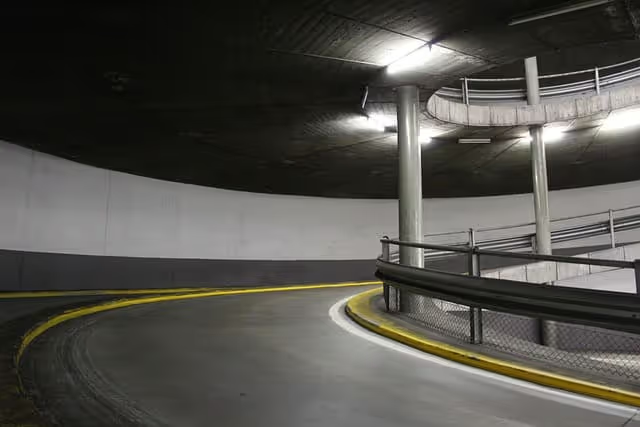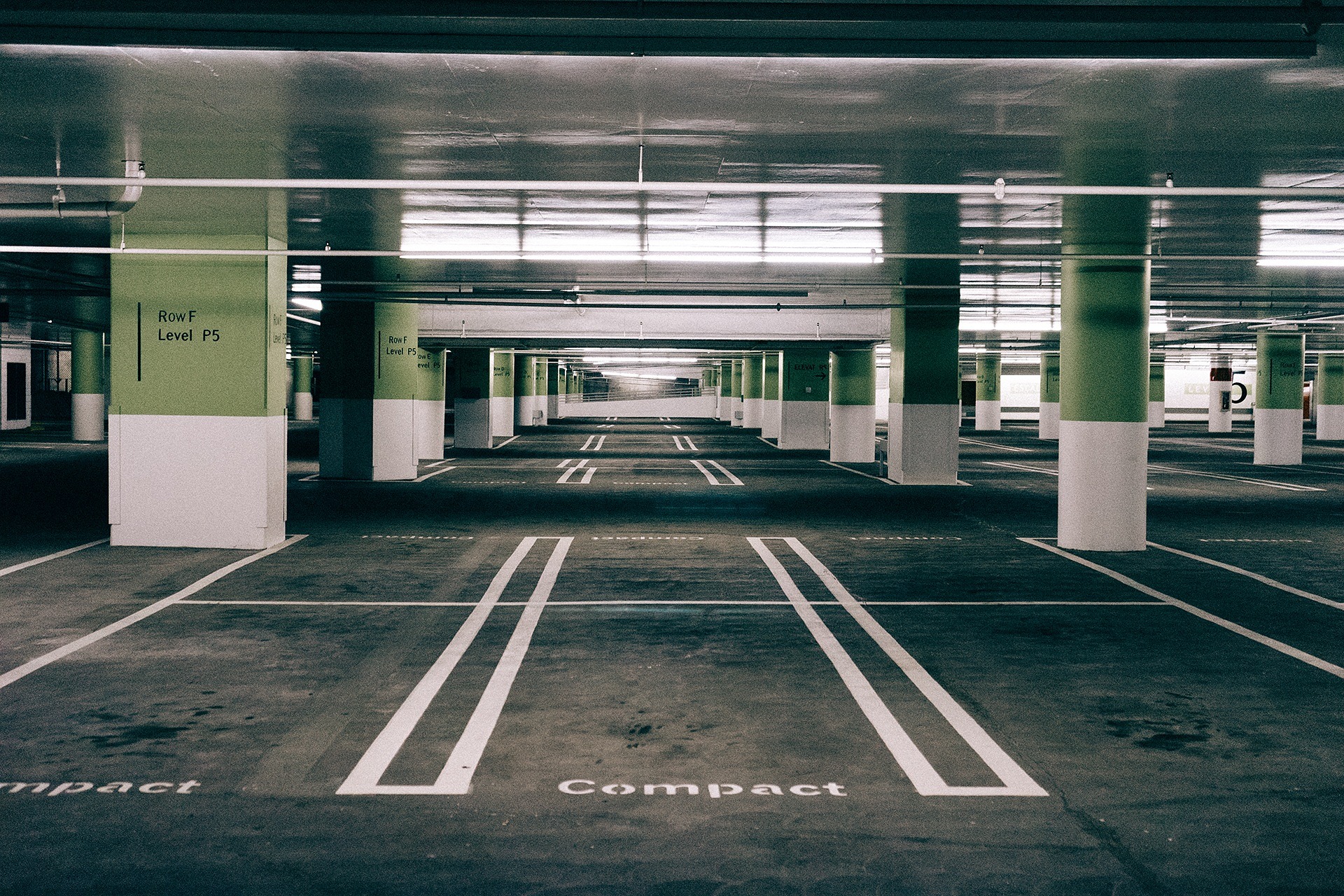Everything You Need to Know About Automated Parking

Are you a parking owner or manager? Are you wondering how to transform this space, often seen merely as a cost center, into a true strategic asset for your building? Has managing your parking spaces become an administrative headache, a source of frustration for users, and an untapped revenue opportunity?
It’s time to rethink parking. Automatic parking management is no longer futuristic—it’s an accessible reality that meets the challenges of urban densification, rising real estate costs, and new user expectations. But what exactly does this term cover? And most importantly, how can you choose the solution that will maximize the flexibility, ease, and profitability of your project?
What Is Automatic Parking Management?
At its core, automatic parking management aims to replace repetitive human interventions with smooth technological processes. But the modern vision goes well beyond just opening a barrier.
The traditional model relies on “silent” infrastructure:
- Barriers that open with a badge or ticket.
- A guard manually managing exceptions and subscriptions.
- Spaces statically assigned (“Spot #42 belongs to Mr. Smith, even when he’s on vacation”).
- No data on actual occupancy, peak times, or user needs.
Result? Monumental waste. Reserved spaces sit empty 50% of the time, while visitors or flexible employees are denied access. The experience is frustrating for everyone, and the parking facility is an underperforming asset.
The New Approach: The “Smart” Parking Lot
Modern parking management, driven by centralized software, acts like a true operating system (OS) for your parking facility. It doesn’t just automate access; it optimizes it.
An advanced parking management software doesn’t replace your existing hardware (barriers, cameras, kiosks); instead, it connects to it to get the best performance. It coordinates all flows and optimizes parking usage daily:
- Dynamic Access Management: Instead of a simple yes/no, the system makes intelligent decisions. It knows who you are (employee, visitor, client), your rights, and whether a space is available for you right now.
- Space Sharing and Pooling: Mr. Smith on vacation for three weeks? The system automatically releases his space for other authorized users, maximizing occupancy.
- Real-Time Visibility: Users, via a mobile app, can see availability before leaving home, reserve a spot, and access parking without friction.
The key distinction is between semi-automated systems (automating only part of the process, like payment) and fully automatic, integrated systems that manage the entire journey—from reservation to data analytics. True added value lies in the latter.
The Unmissable Advantages of a Modern System
Adopting a smart parking management solution is not just a tech upgrade—it’s a strategic decision that brings measurable benefits across multiple areas.
1. Radical Optimization of Space and Revenue
This is the most direct benefit. By pooling spaces and dynamically allocating them, you increase your parking’s effective capacity without building a single extra square meter. Case studies show that proper software management can increase a parking facility’s capacity by up to 47%. For managers, this means:
- Accommodating more users (employees, tenants, visitors).
- Reducing or even eliminating waiting lists.
- Monetizing unused spaces by offering them on public reservation platforms during off-peak hours (evenings, weekends).
2. A Reinvented User Experience
The first and last impression of a building often happens in the parking lot. A smooth, stress-free experience is a major competitive advantage for attracting and retaining talent or customers.
- Frictionless: No more physical badges. Access is granted via license plate recognition (LPR), QR codes on smartphones, or a simple app.
- Autonomy and Peace of Mind: Users can book their spots in advance, are guided to available areas, and manage access via their mobile phone. No more parking anxiety.
- Integration of Sustainable Mobility: Modern systems manage parking spaces for bicycles, scooters, and EV charging stations, providing a complete mobility solution for the site.
3. Enhanced Security and Control
Who entered? When? For how long? An automated system provides perfect traceability.
- Digital Event Log: Every access is recorded, creating a reliable, searchable history.
- Fine Access Management: You can set precise rules—this user group can access from 8 a.m. to 8 p.m. on weekdays; this visitor has one-time access Tuesday afternoon, etc.
- Elimination of Human Risk: No more lost or loaned badges. Access is tied to a person or vehicle and can be revoked with one click.
4. Reduced Operating Costs
Smart automation drastically reduces human intervention for low-value tasks.
- Less Administrative Burden: Subscription management, payments, and waiting lists are fully digitized.
- Better Human Resource Allocation: Security or reception staff can focus on more critical tasks than just operating barriers.
- Predictive Maintenance: By analyzing equipment usage data (barriers, etc.), the system helps anticipate breakdowns.
5. Data-Driven Management and CSR Vision
A smart parking system generates a goldmine of data. Managers no longer operate blindly—they make informed decisions.
- Intuitive Dashboards: Visualize occupancy rates, peak times, average parking duration in real-time.
- Sustainable Mobility Policy: By tracking EV charging station use and promoting soft mobility or carpooling, you can actively support CSR initiatives.
The Pillars of an Effective Parking Management Solution
To achieve these results, a solution must rely on four interdependent technological pillars. Lacking even one weakens the entire structure.
The Brain: Management Software (The "Parking OS")
It’s not just an app, but a robust cloud platform centralizing all operations. A top-tier software must be:
- Hardware-Agnostic: It should connect to any brand of barrier, LPR camera, or kiosk. This is crucial for flexibility and avoiding vendor lock-in.
- Powered by Strong Algorithms: It must calculate real-time occupancy, manage waiting lists, and apply complex priority rules effortlessly.
- Secure and Scalable: Built on a reliable cloud infrastructure, it should handle small lots of 20 spaces or complexes with thousands, all while ensuring data security.
The Entry Points: Access Technologies
These are the system’s “hands,” executing the brain’s commands. Modern solutions integrate multiple technologies for various use cases:
- License Plate Recognition (LPR): The smoothest solution. A camera reads the plate; the system recognizes it and opens the barrier. Ideal for regular users.
- QR Codes: Perfect for visitors. A unique, temporary code is emailed; they scan it at entry. Simple, secure, contactless.
- Mobile App (Bluetooth/4G): Users open the barrier directly from their smartphone.
- RFID Badges: Traditional technology still useful, but should be integrated and managed centrally, not in isolation.
The Human Interface: User App
The best system is useless if users don’t adopt it. A mobile and web app must be intuitive, allowing:
- Real-time availability checks.
- Reservation of a space for specific dates and times.
- Profile, vehicle, and payment method management.
- Notifications (reservation confirmations, etc.).
The Analytical Eye: Dashboards and Reporting
Where data turns into strategy. Managers must have clear, customizable reports to:
- Track key KPIs: occupancy, turnover, revenue.
- Analyze user behaviors: most frequent users, peak hours.
- Manage mobility policy: EV charging usage, carpooling tracking, etc.
- Export data for deeper analysis or financial reports.
How to Choose the Right Partner for Your Project
The market is full of options. To make the right choice, look beyond basic features and evaluate your future partner’s philosophy.
1. Beyond Hardware, Favor Software Flexibility
A modern partner must be a software specialist capable of integrating with your current equipment or any you freely choose. This guarantees a sustainable, scalable solution.
2. Move Toward an Open Ecosystem for Longevity
Your building is a connected ecosystem. Your parking system should be too. Choose a provider with open APIs, ensuring your parking solution can “communicate” with other systems—building management (BMS), HR apps, room booking platforms, etc.
3. Expertise and Guidance
Installing such a system is a transformation project. Your partner should not just sell but act as a consultant to:
- Analyze your specific needs.
- Define the most relevant management rules.
- Guide your teams and users through the change.
4. Case Studies and Measurable Results
Don’t settle for promises. Ask for concrete proof: case studies from similar clients, testimonials, and, most importantly, numbers. A good partner will demonstrate the impact of their solution on occupancy, operational costs, or user experience.
Conclusion: Your Parking, Your Next Growth Lever
Parking management is no longer a side topic. It’s a critical component of property performance and corporate mobility strategy. By shifting from a hardware mindset to a software-driven approach, you’re not just automating tasks—you’re unlocking your asset’s full potential.
The ideal solution offers the flexibility, intelligence, and data needed to adapt to changing user needs—a true operating system for parking that transforms static space into a dynamic, efficient, and human-centric service hub.
Whatever your parking size, tailored solutions exist. It’s time to look beyond barriers and manage your parking with the intelligence it deserves.
Frequently Asked Questions About Automatic Parking Management
Still have questions?
Transform Your Parking Today
Optimize space, cut costs, and deliver a seamless user experience with a smart software-driven parking solution.
Request a Free Demo
.png)
.jpg)
.jpg)
